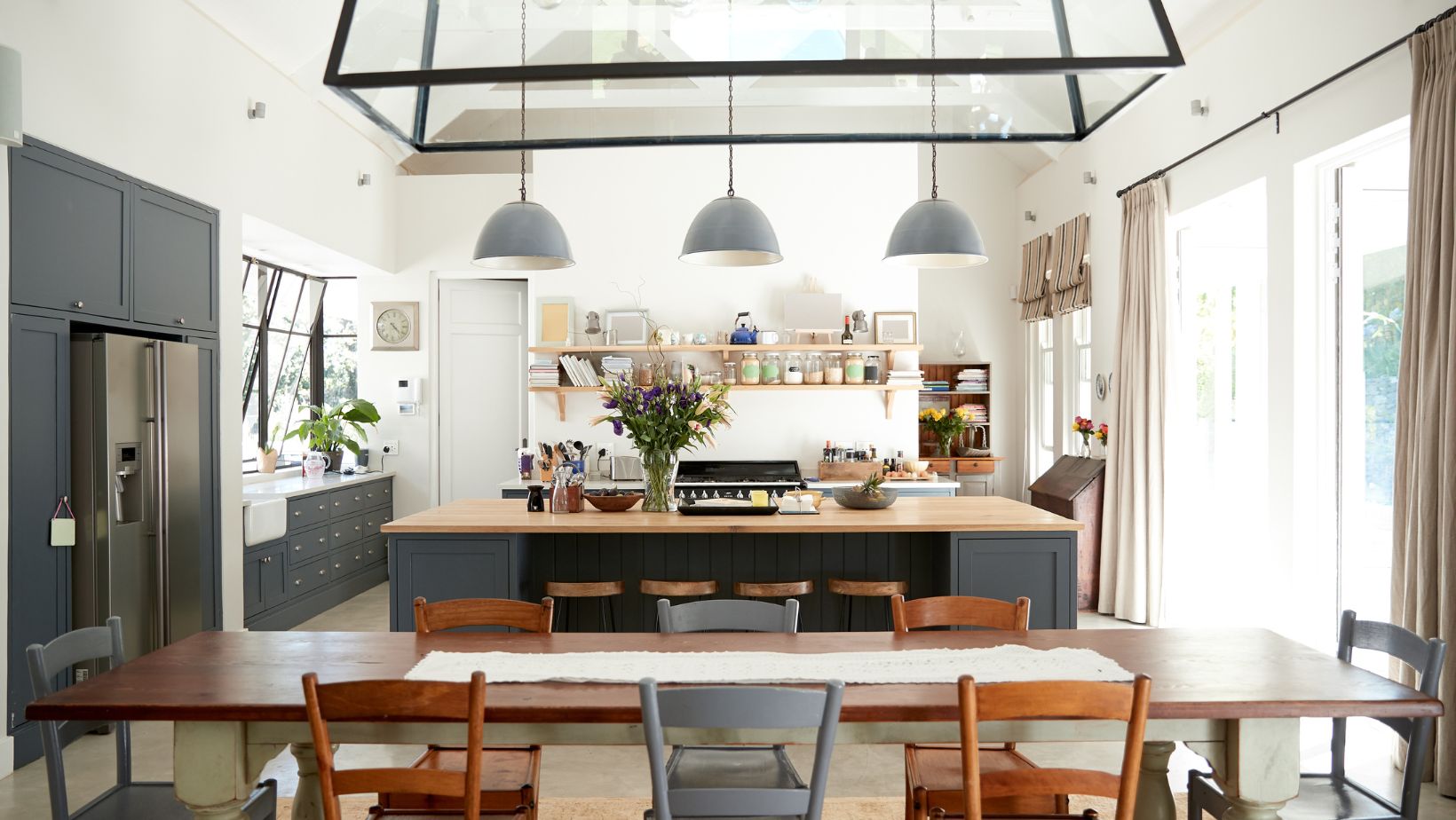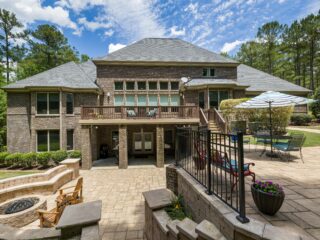
An open-concept kitchen combines the cooking area with the living or dining space, breaking traditional walls and barriers to create a unified, multi-functional environment. This design has become popular in modern homes due to its visual appeal and functionality.
This article explores the benefits and challenges of the open-concept kitchen, providing a balanced perspective.
Pros Of Open Concept Kitchens
More Social And Engaging
Open-concept kitchens transform cooking into a shared, social activity. Imagine preparing your meals while your kids do their homework on the kitchen island or chatting with guests as you put the finishing touches on your cuisine. In this setting, your new kitchen becomes the heart of your home, where conversations flourish and relationships deepen.
Better Flow And Functionality
These kitchens promote freedom of movement. The open layout enables seamless movement between the kitchen and adjoining spaces. It fosters efficiency and accessibility, ensuring every inch is easy to reach and serves a purpose, blending form with function.
More Light And Airiness
Open designs allow natural light to fill the entire living and cooking area. Windows aren’t obstructed, and light permeates throughout, illuminating your culinary creations and social interactions. This influx of light amplifies the room’s spaciousness, casting an airy and expansive atmosphere.
Increased Property Value
An open-concept kitchen isn’t just an aesthetic or functional boon—it could be a wise investment. Homes featuring this design often command higher market prices. Buyers are drawn to the modern, luxurious feel and the versatile space that accommodates intimate family moments and grand social gatherings.
Cons Of Open Concept Kitchens
More Noise And Smells
A room with such openness has its downsides. In an open-concept kitchen, noise and cooking aromas will spread to adjoining spaces. If you cook fish for dinner, expect your living area to share the scent. And that lively kitchen chatter? It might interrupt a peaceful reading session or TV show in the adjacent room.
Less Privacy And Storage
Open-concept designs can also compromise privacy. The kitchen’s exposure to the rest of the home can make it a less private space for those who treasure solitude while cooking. Also, with walls, opportunities for built-in storage can be unlimited, necessitating innovative solutions to keep your space clutter-free.
Can Be More Difficult To Keep Clean
With the kitchen in full view, a sink full of dishes or a spill on the counter becomes part of the living room’s landscape. Maintaining a clean kitchen is essential in an open concept design, as any mess is visible in the adjoining living spaces, impacting the overall ambiance.
Could Cost More
Financially, transforming a traditional layout into an open concept can be a significant investment that depends on several factors.

Converting a conventional closed kitchen into an open concept design may require removing walls, structural adjustments, and obtaining necessary permits, incurring both time and cost. It’s possible to overspend on kitchen renovations if you plan to create an open concept kitchen.
Things To Consider When Designing An Open Concept Kitchen
Layout And Traffic Flow
Maximizing the efficiency of your open concept kitchen begins with a well-planned layout. Ensure easy accessibility between critical areas like the stove, sink, and refrigerator. A design that promotes smooth, unhindered movement elevates the kitchen’s functionality and your cooking experience.
Ventilation And Soundproofing
Adequate ventilation is essential to manage aromas and maintain air quality. Integrate range hoods or other ventilation systems to whisk away odors and smoke. Additionally, consider materials that can dampen sound, reducing noise travel and fostering a serene environment.
Lighting And Natural Light
Spaces that are bright and well-lit offer aesthetic and functional benefits. Blend natural light with varied artificial sources, positioning them strategically for task, ambient, and accent lighting. This mix elevates the space’s appeal and improves visibility and safety while cooking.
Sightlines And Privacy
Balancing openness and privacy can be challenging but is attainable with smart design choices. Implement elements like kitchen islands or tall plants to obscure particular views while maintaining the room’s open feel. Tailor these additions to match your privacy preferences and aesthetic inclinations.
Storage And Organization
Although open concept kitchens may lack wall space, innovative storage solutions can counter this drawback. Opt for multi-functional furniture and built-in storage that are aesthetically pleasing and practical. Doing so will keep your kitchen tidy and organized without compromising its spacious feel.
Is An Open Concept Kitchen Right For You?
While there are clear benefits to an open concept kitchen, it isn’t a one-size-fits-all solution. Consider your lifestyle, how you entertain guests, and your preferences for relaxation. Use these insights to determine if an open concept kitchen suits your needs. If you love the buzz of family activity around you as you cook, and if the pros outweigh the cons for your lifestyle, this design might be your ally.

Always consult a professional kitchen designer to tailor the space to your needs and preferences. Kitchen remodels can also take a while to finish. Time is another factor to keep in mind.
Conclusion
Open concept kitchens are a modern living trend celebrated for enhancing social interactions and increasing natural light. However, they also present challenges in noise management, privacy, and maintenance.
As you ponder this popular design, reflect on your unique needs and lifestyle. Does the combination of a social environment and aesthetic appeal align with your home’s needs, or are the drawbacks significant enough to reconsider?
You can achieve the ideal kitchen tailored to your preferences and needs. Every design choice brings you closer to realizing your dream kitchen. Make your best selection with the detailed insights explored here.





